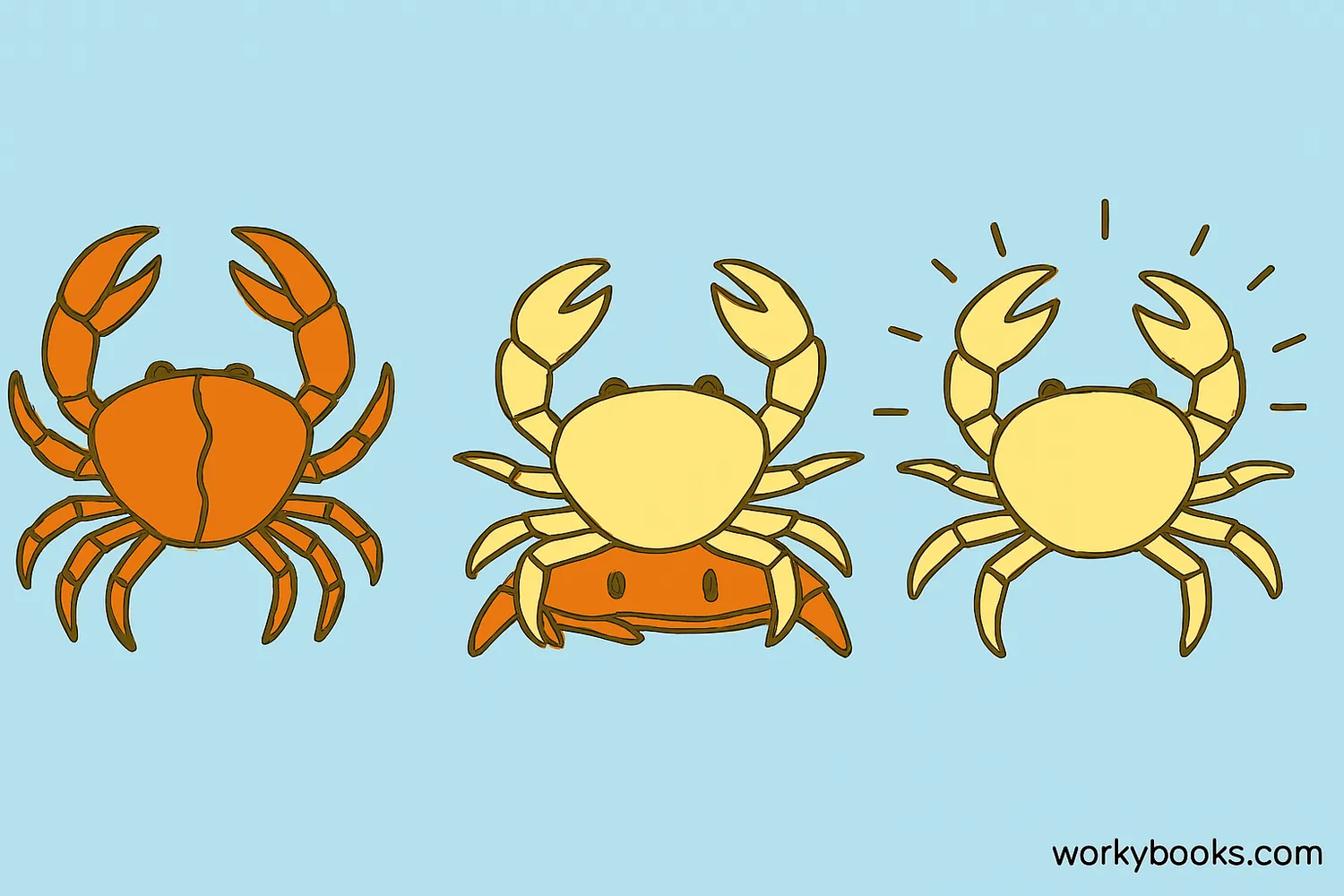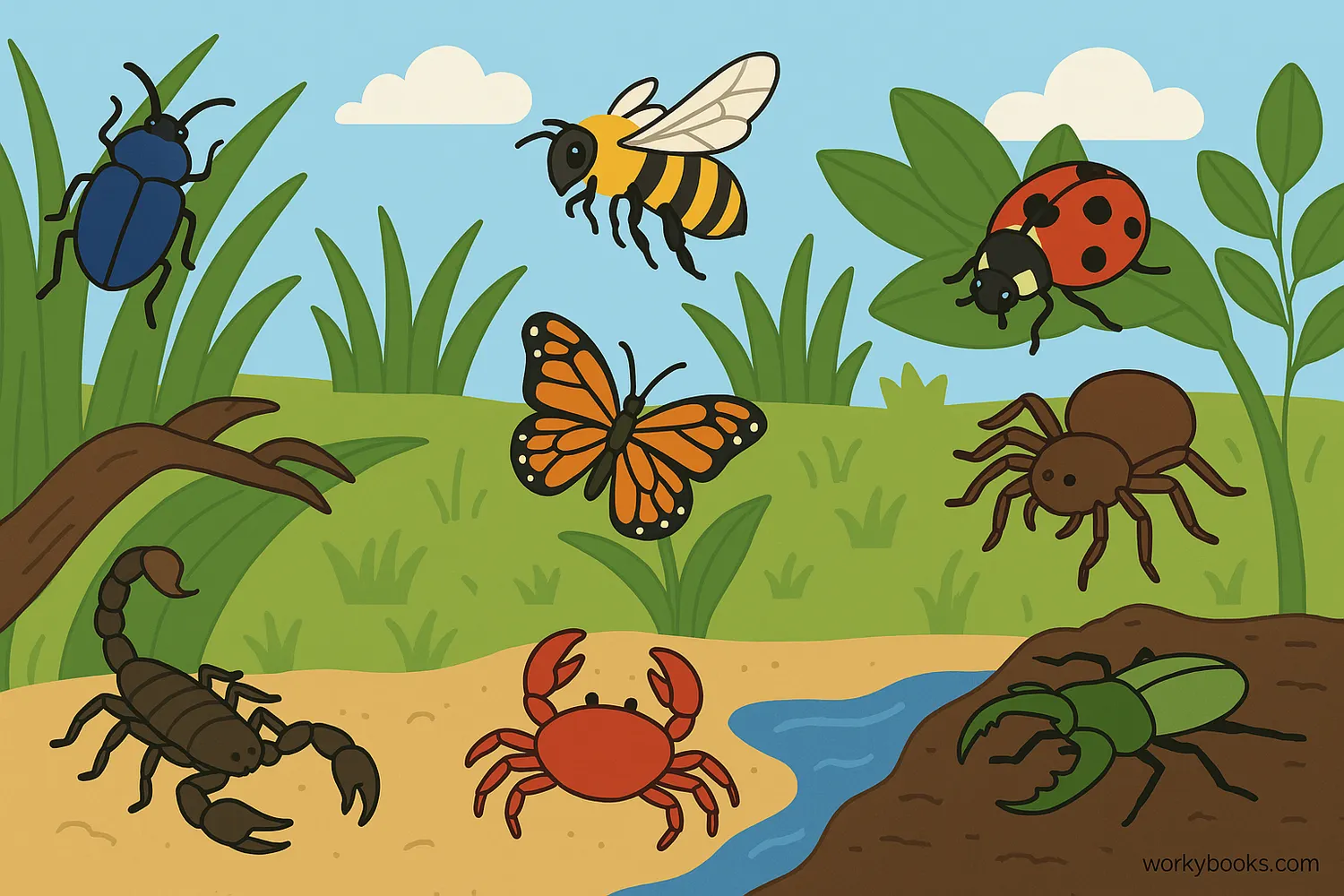Exoskeletons - Definition, Examples, Quiz, FAQ, Triviar
Discover how insects, crabs, and other creatures wear their skeletons on the outside!
What is an Exoskeleton?

An exoskeleton is a hard, protective covering on the outside of an animal's body. The word "exoskeleton" comes from Greek words meaning "external skeleton." Unlike humans who have bones inside their bodies, animals with exoskeletons wear their skeletons on the outside!
Exoskeletons are made of a special material called chitin, which is strong but lightweight. Many exoskeletons also have minerals like calcium carbonate that make them extra strong and hard. This external framework provides support, protection, and shape to the animal's body.
Did You Know?
About 97% of all animal species have exoskeletons! This includes insects, spiders, crabs, lobsters, and many other creatures.
How Exoskeletons Work

Exoskeletons are amazing structures that serve multiple purposes for the animals that have them. Here's how they work:
Protection
The hard shell acts as armor against predators and environmental hazards
Support
Provides structural support, like our bones do, but on the outside
Movement
Joints in the exoskeleton allow animals to move their legs and body parts
Prevention of Water Loss
Waxy coating helps land arthropods retain moisture
Sensory Input
Hairs and sensors on the exoskeleton detect touch, vibration, and chemicals
One challenge with having an exoskeleton is that it can't grow with the animal. To solve this, arthropods go through a process called molting (or ecdysis). They shed their old exoskeleton and grow a new, larger one. During this time, they're vulnerable until their new exoskeleton hardens.
Molting Marvels
Some arthropods molt multiple times throughout their lives. A lobster might molt 25 times in its first 5-7 years of life!
Why Exoskeletons Matter

Exoskeletons are incredibly important for both the animals that have them and for ecosystems as a whole:
Evolutionary Success
Exoskeletons have helped arthropods become the most diverse and numerous animals on Earth
Ecological Roles
Arthropods with exoskeletons serve as pollinators, decomposers, and food sources
Human Inspiration
Exoskeletons inspire engineers to create protective gear and robotic suits
Without exoskeletons, our world would look very different. We wouldn't have:
• Bees and butterflies to pollinate flowers and crops
• Crabs and lobsters as food sources
• Decomposers like beetles to recycle nutrients
• The incredible biodiversity we see in insects and other arthropods
Exoskeletons represent one of nature's most successful adaptations, allowing animals to thrive in almost every environment on Earth!
Exoskeleton Quiz
Test your knowledge about exoskeletons with this quiz! Answer all 5 questions to see how much you've learned.
Frequently Asked Questions
Here are answers to some common questions about exoskeletons:
Amazing Exoskeleton Facts
Discover some incredible facts about exoskeletons!
Super Strong
Pound for pound, some exoskeletons are stronger than steel! The mantis shrimp's exoskeleton is so strong it can withstand the incredible force of its own punches, which are among the fastest movements in the animal kingdom.
Incredible Diversity
There are over 1 million described species of insects alone, all with exoskeletons! Scientists estimate there may be millions more insect species yet to be discovered.
Ancient Armor
Exoskeletons have been around for over 500 million years! Some of the oldest fossils with exoskeletons are trilobites, which lived during the Cambrian period.
Human Exoskeletons
Engineers have created robotic exoskeletons that help people with mobility issues walk again. These wearable devices are inspired by the natural exoskeletons of insects and other arthropods.


